|
6/3/2021 0 Comments "Plant-based Power for Summer Solstice time: healthy eating ideas for energy and wellness" By Stacie Dooreck, Author of Yoga for Everyone! books It’s summer solstice time! After lock downs, more hours sitting at the computer at home, many not using gyms and eating more junk food for many led to weight gain, less energy and motivation and poor eating habits. There is no better time than now to start to cleanse the body with healthier plant-based eating. “All tremble at violence; all fear death. Putting oneself in the place of another, one should not kill nor cause another to kill.” Dhammapada, verse 129 Shifting to, or maintaining, a vegetarian or vegan diet to create a healthier body and a more peaceful mind can be a very simple process. Just as you brush your teeth and shower to keep your outside body clean, you can also eat foods that keep your insides clean and well nourished. In the process, you can save harming the animals and the earth, for ethical and sustainability benefits. Even if you don’t become a vegan, you can try some additional healthy plant- tased meals as side dishes or for certain days of the week. The healthier you eat, over time, can shift cravings to healthier food as you feel more energy and vitality from fresh greens and vegetables. As a lifelong vegetarian, raised by parents who shifted to a lacto-ovo vegetarian diet (no meat, fish or chicken) before I was born, I didn’t have to give this diet much thought. When others ask, “What do you eat?” My answer is simply, “Everything but the meat.” It is simply not in my consciousness that animals are food. For those of you who do see meat as food, if you increase your daily intake of vegetables, nuts, grains and fruits, you may decrease your desire to consume meat, as you feel better overall. I also shifted to vegan eating 7 years ago, which excludes dairy products and eggs as well. I not only do not miss it but feel better overall in mind and body from eating a diet that is optimal nutrition for my body. Research shows that eliminating dairy and meat and all animals foods from your diet can improve health and prevent heart disease and other dis-eases. As a yoga teacher/Stress Management Specialist for the Ornish Heart Disease Reversal programs the last few years, I saw first hand how people’s health improved from a vegan or vegetarian diet (with exercise and yoga as well). A plant-based vegan diet is typically one in which vegetables, fruits, nuts and whole grains are eaten in balance to create optimal health and vitality. With proper balance of the protein and nutrients your body needs, you can shift to or maintain a vegan or vegetarian diet with ease. Keep it simple, not eating too much or too little protein and balancing meals with vegetables and grains while making it appealing to your taste buds. Let your dietary habits support “an easeful body, peaceful mind and useful life,” as Swami Sachidananda taught as the goal of all yoga. Start by adding more vegetables to your meals, or as a side dish. There is also Meatless Mondays where you can choose one day of the week to try wholesome and nutritious vegan meals. Enjoy these recipes: Edamame and Pomegranate Seed Salad Edamame, sliced almonds, pomegranate seeds, cucumbers, carrots, sprouted mung beans (soak and rinse daily until the mung beans sprout), black pepper, fresh organic lemon juice and olive oil Benefits: Simple to make yet tasty and nutritious. Also, mung beans are great protein, good for those transitioning to a vegetarian/vegan diet Power Protein Sprouted Lentil Salad Soak lentils over night (you can also sprout them for an extra day) sliced almonds sesame seeds parsley flakes (or add fresh organic greens) Add some oil and fresh squeezed lemon. Simple and nutritious! Bio: About Stacie Dooreck:
0 Comments
1/8/2021 2 Comments “Chair Yoga 101: Adapting an Asana Practice so It’s Accessible for All” Jan 7, 2021, Yoga Adaptation feature article on Yoga Unify org; written by Stacie DooreckChair Yoga and Certified Sivananda Yoga Instructor Stacie Dooreck is a Yoga Unify Honorary Qualified Professional, and serving on the Governing Council of Qualification and Education. This piece is an excerpt from her book, SunLightChair Yoga: Yoga for Everyone! Reprinted with permission.* * *
Chair Yoga is yoga, using a chair (standing and seated, or both), as a prop for support. Chair Yoga can be useful to adapt yoga poses when injured, ill, pre/post surgery at your desk (‘office yoga’), if in a wheelchair or if you have limited mobility. It also can be useful when traveling (practice on planes, park benches or anywhere). Chair Yoga can help make yoga accessible for everyone and is a well needed prop for many so that they can practice yoga poses (asanas) safely. Yoga teaches will benefit greatly by learning Chair Yoga as well so that all of their students can have safe and effective options to practice yoga). Chair Yoga: Please Remain Seated Chair Yoga increases the accessibility of the practice. When speaking about Yoga, we’ve all heard the following statements: “I can’t do Yoga until I feel better.” “I don’t have time to get to a class.” “I can’t get down on the floor and back up again for a Yoga practice.” “My workday is too long.” “I’m too old to do Yoga.” Injury or illness, age or other so-called “limitations” (including working all day at a desk), may prevent people from getting on the floor do practice poses or even stand on a mat for upright postures as we may know the poses. However, with some creativity and modifications anyone, in any circumstance, can always practice Yoga. Renowned yogi Sri T. Krishnamacharya famously said, “If you can breathe you can do Yoga.” Sitting as tall as you can, yet in a relaxed manner is the key to success in many meditation postures and pranayama practices (breathing exercises). Finding a comfortable seat, even in a chair, is a great place to begin to set the stage for the Yoga of breath. A Simple Practice to do Anytime One simple, yet powerful practice is to observe the breath as it is. Or you can begin to extend the duration of the breath and slowing count the inhalation and the exhalation. Try starting with something attainable, such as inhaling slowly for three counts, exhaling for three counts and then gently extending the duration first to four counts and then longer as desired. Maintain a sense of ease throughout. Another breathing practice is to recite a mantra (such as “I am”) with each breath. There are chair Yoga versions of most postures that are designed to increase mobility, vitality and flexibility. These include: sun salutations, forward bends, backbends, spinal twists, sitting mountain pose, eye exercises (which can help reduce eye strain from hours at the computer) and breathing exercises (which can calm the body, increase our energy or heighten concentration). At your desk, in a wheelchair or wherever you are right sitting now, stop and take a two- minute Yoga break and reenergize. Try this sequence: Inhale and exhale slowly. Inhale and lift both arms overhead. As you exhale, lower both your arms. Repeat this five to ten times and see how you feel. When standing postures are practiced in these classes, the chair is used for support to enhance stability. But you don’t even have to stand up from the chair to do Yoga. I’ve seen great shifts in posture and energy from my senior home chair Yoga classes using poses from this sequence of gentle chair Yoga suggested here. You can stay seated – and still do Yoga. Look for chair Yoga classes, often held at Yoga studios, community centers, clubs and senior centers. “Chair Yoga 101: Adapting an Asana Practice so It’s Accessible for All” Jan 7, 2021, Yoga Adaptation feature article on Yoga Unify org; written by Stacie Dooreck Stacie Dooreck is the founder of SunLightYoga, as well as a Kundalini, Gentle Integral, and Sivananda instructor. She’s also a Yoga instructor for online Chair Yoga teacher certifications and yoga courses. To join Stacie as a Founding Yoga Unify member, click here! 12/11/2020 2 Comments Chair Yoga for TravelChair Yoga for Travel by Stacie Dooreck
Have you ever been at the airport, on a plane or a bus and felt like you really needed to stretch? You start wishing you could just get where you’re going to do some yoga to ease that stiff back or those tight shoulders. Well, there’s good news: you don’t have to wait! With some creativity and modifications you can always practice yoga. “If you can breathe you can do yoga,” says the yoga master Krishnamacharya. Here are some “chair yoga” ideas you can use on a plane, train, or bus (or at your desk, in a wheelchair): Sitting Mountain Meditation 1. As a starting point, sitting tall yet relaxed is the key to many meditation postures and breathing exercises (pranayama). Then simply become aware of your body sitting, allowing a natural stretch in your spine and feeling your lower body release downward and as your spine lengthens upwards. 2. Next, begin to simply observe your breath just as it is, without any effort or strain. This may take a little while, but the result is naturally calming. Keep bringing your focus back to your breath. 3. You can then add a basic breathing exercise: inhale slowly for 3 counts, then exhale slowly for 3 counts. Continue for a few rounds, possibly adding a stress-free 1-3 count pause in between each inhale and exhale. As you settle in, you can try 4 counts, then 5. The important thing is not to force anything. 4. You can also add a mantra, such as “so hum,” (meaning “I am”) or simply OM. Add the mantra silently inside yourself as you inhale and again as you exhale. Mantras calm and help focus the mind adding benefit to your breathing exercise. Upward Hand Pose (Urdhva Hastasana) Wherever you are sitting right now, try this re-energizing 1-minute yoga break. 1. Inhale and lift your arms up overhead. Exhale as you lower your arms. Stay aware of your lower body’s connection with the seat and move slowly. 2. Repeat 5-10 times or hold the arms overhead for 3-5 slow, deep breaths, then exhale as you lower them. 3. Sit and relax for a few moments after. Benefits: This energizes the body, stretches the spine and waist, and increases mobility to the shoulder joint. Seated Spinal Twist (Ardha Matsyendrasana) 1. Sit tall and away from the back of your chair or seat on the plane. Cross your legs fully or just the ankles. 2. Inhale slowly. Exhale as you twist to one side. Keep the head centered over your spine and twist gently and evenly throughout the entire spine. 3. Hold for 1-3 slow, deep breaths or as long as comfortable. Benefits: Twists release back tension, help the digestive organs, and calm the nervous system. They also increase spinal flexibility. Precautions: If pregnant, for all twists, do not twist through the torso (belly). Twist only from the area above the ribcage (all trimesters). For whiplash or neck pain, keep the head facing forward or as comfortable. Arrival Recuperation/Legs Up on a Chair 1. Sit down on the floor with the side of your body facing the chair front. Lower yourself down to your elbows then onto your back, using your hands and arms to support you. 2. Then bring the legs up on the chair. Place the hands about one foot from the hips with the palms facing up towards the sky. Keep the head centered over the spine. 3. Close your eyes and enjoy some slow, deep breathing. Relax your body and mind, settle in, and let go. Stay in the posture for 3 to 5 minutes, or longer if you are comfortable. 4. To come out lower the knees to the chest and pause. Then roll to one side and pause again. Use your arms to come up to sitting. (You can use the support of the chair if you need as well.) Slowly let the head come up last and sit quiet for a few movements and meditate on the breath. Observe the calm that this posture creates. Benefits: This posture eases the low back, balances the body’s energy, and is said to help alleviate jetlag and insomnia. Remember, yoga IS for everyone! So go ahead: stay seated and do some yoga today. Inhale, sit tall, exhale, relax. Written by Stacie Dooreck, creator of SunLight Chair Yoga and author of SunLight Chair Yoga: Yoga for Everyone! online Chair Yoga teacher trainings. Stacie is a Sivananda Yoga instructor since 1995, she is also a certified Gentle Integral and Kundalini trained teacher. Stacie has been implementing yoga programs in health clubs, senior homes, hospitals, and corporations since 1994. Chair Yoga books, courses and trainings are on www.sunlightyoga.com SunLight Chair Yoga: yoga for everyone! book is also accessible for the blind and print impaired in Braille and audio format (no charge), on the website above. Chair Yoga: yoga for everyone!
What is Chair Yoga? It is Yoga, using a chair (standing and seated, or both), as a prop for support. Chair Yoga can be useful to adapt yoga poses when injured, ill, at your desk (‘office yoga’) or if you have limited mobility. It also can be useful when travelling (practice on planes, park benches or anywhere). Chair Yoga can help make yoga accessible for everyone and is a well needed prop for many so that they can practice yoga poses (asanas) safely. Yoga teaches will benefit greatly by lear ning Chair Yoga as well so that all of their students can have safe and effective options to practice yoga). What is a Chair Yoga class like? Chair Yoga classes or private sessions gives you the full benefits any other yoga class entails: centering, yoga warm ups, yoga exercises & postures, concentration & breathing exercises, guided relaxation & meditation. The main difference is that students can sit in a chair or use a chair while standing, as a prop, for balance and support. What are the benefits?
Who can participate?
What do you wear? Anything you want! Shoes or socks can be on of off in Chair Yoga classes Some Chair Yoga at Work Benefits
Chair Yoga article: Please Remain Seated Chair Yoga Increases The Accessibility Of The Practice When speaking about Yoga, we’ve all heard the following statements: “I can’t do Yoga until I feel better.” “I don’t have time to get to a class.” “I can’t get down on the floor and back up again for a Yoga practice.” “My workday is too long.” “I’m too old to do Yoga.” Injury or illness, age or other so-called “limitations” (including working all day at a desk), may prevent people from getting on the floor do practice poses or even stand on a mat for upright postures as we may know the poses. However, with some creativity and modifications anyone, in any circumstance, can always practice Yoga. Renowned yogi Sri T. Krishnamacharya famously said, “If you can breathe you can do Yoga.” Sitting as tall as you can, yet in a relaxed manner is the key to success in many meditation postures and pranayama practices (breathing exercises). Finding a comfortable seat, even in a chair, is a great place to begin to set the stage for the Yoga of breath. One simple, yet powerful practice is to observe the breath as it is. Or you can begin to extend the duration of the breath and slowing count the inhalation and the exhalation. Try starting with something attainable, such as inhaling slowly for three counts, exhaling for three counts and then gently extending the duration first to four counts and then longer as desired. Maintain a sense of ease throughout. Another breathing practice is to recite a mantra (such as “I am”) with each breath. There are chair Yoga versions of most postures that are designed to increase mobility, vitality and flexibility. These include: sun salutations, forward bends, backbends, spinal twists, sitting mountain pose, eye exercises (which can help reduce eye strain from hours at the computer) and breathing exercises (which can calm the body, increase our energy or heighten concentration). At your desk, in a wheelchair or wherever you are right sitting now, stop and take a two-minute Yoga break and reenergize. Try this sequence: Inhale and lift both arms overhead. As you exhale, lower both your arms. Repeat this five to ten times and see how you feel. Look for chair Yoga classes, often held at Yoga studios, community centers, clubs and senior centers. When standing postures are practiced in these classes, the chair is used for support to enhance stability. But you don’t even have to stand up from the chair to do Yoga. I’ve seen great shifts in posture and energy from my senior home chair Yoga classes using poses from this sequence of gentle chair Yoga suggested here. You can stay seated – and still do Yoga. Stacie Dooreck is a Certified Sivananda Yoga Instructor since 1995, Kundalini and Gentle Integral and Chair Yoga Instructor for online Chair Yoga teacher certifications and yoga courses. sunlightchairyoga.com 11/14/2020 0 Comments Thanksgiving Vegan RecipesThis Thanksgiving, enjoy some delicious and nutritious vegan recipes that do not harm or kill animals. Eating vegan is in alignment with values of love, compassion and unity. Not only does it spare animals suffering, but it is also better for our health and the earth.
This Thanksgiving and always, I am so grateful for my parents who raised me vegetarian. I never ate the animals, and we never had any in our house that were not alive (pets). I am so grateful to the yogis that taught them values of compassion and nonviolence (ahimsa) towards animals. Every day, and each thanksgiving, I hope to spare animals (and the earth) from suffering, by educating others on the benefits of eating a plant-based vegan diet, in harmony with all living beings, our bodies and the earth. As yoga master Dharma Mittra says "we must extend our compassion beyond our pets." All beings want to live. Turkeys too. I am sending this on my SunLight Yogatips Eletter also prior to the holiday, so that you can get ideas how to make healthy and delicious vegan holiday meals. Enjoy! Veggie-key Recipe from the Sivananda Yoga Farm “A delightful alternative to turkey that works well with all the traditional trimmings.” Carrot Ginger Soup Baked Butternut Squash (from the Yoga Farm) 10 Simple Vegan Thanksgiving Recipes Creamy Pumpkin Soup Mashed Cauliflower OR Mashed Potatoes Balsamic Roasted Green Beans and Mushrooms Roasted Butternut Squash with Brussel Sprouts Vegan Stuffing: 3 Ways Mushroom Gravy Roasted Stuffed Butternut Squash Lentil Mushroom Walnut Balls Coconut Banana Bread (Vegan) Namaste Stacie www.sunlightyoga.com • 10 online yoga courses • Monthly online memberships •Chair Yoga teacher certification How Do I Control My Eating? by Swami Satchidananda lecture. Swami Satchidananda is asked for advice on how to control one’s eating habits. He also answers a question about how to not go to extremes in one’s spiritual practice. This yoga master, Swami Satchidananda is one yogi that my father studied with before I was born, and why he and my mother shifted to be vegetarian. This is on reason why I never ate fish, chicken or meat in my life, because of these teachings and my parents shift, due to these reasons which is the yogic diet philosophy, for health and the animals. *Both are my parents are still vegetarian or vegan, over 46 years later and I am too, 45 years later. (As of Ot 2020) My father's dog (standard poodle) is also a vegan! (: Yes! Davinchi the dog is vegan too, and thriving with perfect health. Why Be Vegetarian? by Swami Satchidananda, Optional lecture about yogic diet and why yogis are vegetarian. A 5-Minute Practice to Help Ease Anxiety and feel Calm, by Stacie Dooreck
What if it took only five minutes a day to feel more calm, centered, and have more ease in the body? That is all it takes. Five minutes of meditation can be enormously helpful for your body and mind. Studies have found that it can counteract the effects of conditions such as hypertension, anxiety, diabetes, aging, and so much more. Meditation is an effective and simple tool for reducing stress, calming the mind, gaining clarity, and increasing intuition and concentration. However, it only works when you actually do it. Here are some simple tips to help you start a meditation practice: 1. Create a consistent time and space. Create a space to sit in the same location each time you meditate, if possible. This can be a corner of your room, a quiet room in your house or office where no one else is, or even a bench in a park. Try to find a space with minimal distractions and noise. The mind will start to associate that area with feeling calm and centered, which might make it easier to get into a peaceful state of mind. Try to meditate at around the same time each day. The ideal times are before sunrise or sunset, also called the amrit vela ("ambrosial hours"), when all is calm. Really any time of day is better than not making the time at all. If you cannot be consistent with a location or time of day to meditate, then do your best with what you can create, and you'll still reap the benefits. 2. Create a comfortable seat. If the body is comfortable, there is less distraction. Sit in an upright position that you feel good in. Asana is a Sanskrit word for a comfortable and steady meditation posture. If you are not comfortable sitting cross-legged (sukhasana) on a cushion or on the floor, you can sit in a chair. But try to keep the spine tall yet relaxed, as this will keep your mind alert and more readily able to concentrate. If you are sick or bedridden and can't sit upright, you can meditate lying down. However, for those who can do it, sitting upright is recommended so that the mind is less likely to drift off and fall asleep. 3. Supplement your meditation practice with yoga. Doing yoga postures is useful to keep body aches and pains away, but they also create more flexibility and ease for sitting in meditation postures. Find a class at your local community center, ashram, or studio if you have never tried yoga postures. Even a 15-minutes-a-day practice of yoga exercises and gentle postures will make meditation postures and practices more restful. 4. Remember that your eating and drinking habits contribute to your mental state. If you drink a lot of caffeine and eat foods that agitate the mind, this will hurt your meditation practice. Although you do not have to change your diet or habits to meditate, eating a vegetarian and wholesome diet that does not harm animals, according to the yogis, is the ideal diet for creating a peaceful mind, emotions, and body, which will then support the meditation practice. If changing a simple dietary habit creates peace of mind and greater health, why not consider taking small steps to create it? 5. Join a meditation group. If you find it difficult to discipline yourself to create a home practice, join a meditation group. Deepak Chopra offers a 21-day, free guided meditation journey a few times a year, and there are other groups you can join online to be connected to a global community. If you meditate on your own each day, it might give you further encouragement and support to join a group, even if it's only occasionally. Each day you listen to the mind giving reasons why you don't have the time, location, or condition to meditate is another day that goes by when you could be enjoying more inner peace. The outer conditions may never be perfect for you to create a practice, so just start where you are with a minute a day and be with your own breath. By Stacie Dooreck, Certified Yoga Instructor and author of SunLight Chair Yoga books SunLight Yoga monthly memberships and 10 self-paced courses online: yoga, Office Yoga, Meditation, Hatha, Gentle & Chair Yoga. Enjoy 15-60 min classes as hOMe. Also is an online 35+ hr Chair Yoga teacher training. Yoga is for everyone! www.sunlightyoga.com Excerpt for Q & A from my Chair Yoga teacher training 35+ online course.
Link on www.sunlightyoga.com Can I teach Chair Yoga if I am not a vegetarian or vegan? This questions may arise. No, you do not have to eat any certain diet or live any certain way to teach Chair Yoga or yoga. It is your own journey to what feels comfortable and best for you. (Ashrams which are traditional yoga communities do not have fish or meat in them nor allows it however, and animals are friends to the yogis so are not included in their diet). II feel blessed, to be raised vegetarian, with the entire family. I feel blessed, at age 45 to still never have eaten animals, (didn't even try it, not even once, any fish, nor chicken nor animals, nor ever wanted to). I shifted to vegan (no eggs or dairy) 7 or so years ago. My health feels even better as a vegan than vegetarian. If you makes shifts, learn some nutrition basics though. (Ex: I take a B-12 supplement because I don't eat eggs, and add nutritional yeast for B-12 into soups and salads and meals.) The rest of nutrients I can get in my plant-based vegan diet. I even tested my blood work 6 months after shifting to vegan after 30-40 years vegetarian, and again this year (2020 at age 45) and every test showed 100% healthy for the nutrients (vit B-12 was fine and all). I do include this topic here however, even though it is each person's choice, because it is very much a part of yoga lifestyle, o eat a certain way, in harmony with the animals. Some choose to practice or teach only the yoga exercises, asanas (poses) and meditation and not change their diet or teach about it. That is each person's choice. Keep in mind also, to teach or practice yoga, you do not have to be a 'perfect' yogi or yogini (women who practices yoga)- according to the Yoga Sutras and rules. They are guidelines to learn and live by if it resonates, like an ethical guidebook so to speak. But yoga is not a religion, it is a universal path to live in health and harmony and peace with all around us and ourselves. We can just do our best and can raise consciousness, compassion and awareness, as we choose, and if we choose. Even small steps to eat healthier, more vegetables and eat less animals is a step to save animals lives, to help your health and the earth. If that is of interest to you, know that you can take your own journey with it. Some shift as in an all of nothing with their diet, and some take smalls steps. I add this topic in my course, because the ethics and yogic philosophy teaches that for nonviolence (ahimsa in Sanskrit) and compassion, for harmony of the earth and all beings (and for optimal health), the yogis are vegetarian (now really vegan to keep up with nonviolence, as cruelty is there also in the egg and dairy industries). The yogis also say it helps meditation and the yoga practice, to have a healthier body. Try it as an experiment. Practice your yoga postures on days you ate fried food, junk food or animal products (meat or dairy) vs. days you ate plant-based vegan or vegetarian. See how your body and energy feels. Which allowed you to focus more also? Our food choices effect our mind as well as our energy and body. 81 year old vegan yoga master Dharma Mittra says "if you eat food that is dead and fried, you will feel dead and fried." That is one way to make a light joke about it, yet has truth to it. Many commercial modern yoga trainings do not add this topic, because not everyone wants to be vegetarian or vegan or is, so it is not a popular topic. If they are concerned more with their business incentives of getting registrants, vs. teaching the full yogic path, that may be why some do not discuss it. I personally would not want to leave out this crucial part of healthy yogic living. However, I am not judging, nor instructing what those who take my courses 'should' or have to do as far as eating goes. It is everyone's personal choice. This topic however, may get a little controversial for some and can trigger some discomfort or strong opinions and ideas. Yet, comfort does not always make us grow and reflect and I want to be authentic to the yogic teachings as I understand them. So I didn’t want ignore it, but I’m careful not to put too much about this topic as it is an aspect, but not the only aspect of yogic living and teaching. The yoga masters and lineages and in yoga ashrams however, will not talk about eating fish or meat as part of yoga though, or allow it in their trainings or ashram communities. But even if people don’t eat vegan or vegetarian they can still go to ashrams, practice yoga and teach it. (Try adding more vegetables to your diet regardless though, and see if you feel more energy and get inspired to continue eating in a way that brings you radiant health.) I actually love the vegan eating topic now, because it makes you feel so good when you eat healthy, it helps animals and the earth so is a win-win-win for all. So overtime I might actually add some vegan cooking videos on this course, just for fun. You are ultimately control your own eating habits and choices. We all know habits are hard to break. But yet possible. Each has their own story and history to unravel with society, family and cultural teachings on eating and emotional eating habits. Finances can be a factor too in food choices and availability of foods in certain areas (food justice and social justice can be factors). The yogic path teaches us ways to minimize harm to other beings and our own bodies. I hope this section gave you 'food for thought', no pun intended. In summary, no, you do not have to be anything but yourself, and make your own educated choices when teaching yoga and Chair Yoga. But also no, yogic diet does not include living beings (no fish, meat or animals). We may also not be a "perfect" vegan or vegetarian even with good intentions, but try not to let that discourage you. Making shifts anyway towards healthier eating, in harmony with all beings can bring so many benefits. To learn more read the book (out in 2020) "Yoga and Veganism" by Sharon Gannon, founder of Jivamukti Yoga, or her prior book Yoga and Vegetarianism. Or these below: I recommended these books highly:
www.sunlightyoga.com Stacie Click here for the Ahimsa Diet page on my website “All beings tremble before violence. All fear death. All love life. See yourself in others. Then whom can you hurt? What harm can you do?” ~ Dhammapada 129-130 Historically, yogis were vegetarian, and many are now shifting to vegan. This is because the ethical basis for a yogi, even before postures are considered, is the first of the Eight Limbs of Patanjali’s Sutras: Ahimsa, which means nonviolence. If we are practicing or teaching yoga poses named after and mimicking the same animals we then eat, isn’t this supporting the same violence we fundamentally oppose? If we want to lead a more compassionate lifestyle, not to mention one that’s better for our health and the earth’s sustainability, then eating a plant-based vegetarian or vegan diet, as numerous studies now show, is one way to do so and have an enormous impact. Shifting to a compassionate way of eating does not have to be hard. There are amazing organizations doing great work to educate the masses on how to live healthily and cause the least amount of harm to animals and the earth. Mercy for Animals and PETA are two such organizations, and they even provide vegan starter kits and a plethora of online recipes and videos for ideas. Yoga Masters Dharma Mittra and Sharon Gannon of Jivamukti yoga, both based in New York City, are advocates of the idea that going vegan is necessary in order to live a true yogic lifestyle. Dharma Mittra says, “If you are interested to go deeper into yoga, you should read The Yoga-Sutras and The Hatha Yoga Pradipika. For those just interested in living a more ethical life, there’s The Dhammapada.” He also says, “The action of compassion is to see yourself in others.” Sharon Gannon, author of Yoga and Vegetarianism, says, “By enslaving other animals and abusing them through lifelong torture, degradation and eventual slaughter, we deprive them of freedom and happiness. How can we ourselves hope to be free or happy when our own lives are rooted in depriving others of the very thing we say we value most in life—the freedom to pursue happiness? If you want to bring more peace and happiness into your own life, the method is to stop causing violence and unhappiness in the lives of others. We cannot demand something that we ourselves are not willing to embody. Through the practice of yoga and veganism, we can realize that we were meant to live in harmony with all the other animals and all of life. We come to know that our physical bodies function better without having to instill fear into others and to kill them, and that there is no nutrient that we need that we can’t get directly from plant sources or from sunlight. We come to recognize that our old bodies can be transformed and become light and whole—holy bodies, used as vehicles to bring peace. The fork can be a powerful weapon of mass-destruction or a tool to lead a movement of peaceful coexistence. Eating a compassionate vegan diet will stop war, create peace in one’s body, peace with the animal nations, and peace on Earth.” A yogic diet is a vegetarian diet, one in which vegetables, fruits, nuts, grains, and dairy (in small amounts) are eaten in balance to create optimal health and vitality. Due to the harmful nature of modern factory farming to both the animals and the land, I feel a vegan diet (no animal products whatsoever) is now the more compassionate choice. It’s also interesting that so many are “going green” by recycling more and being more mindful of eating organic foods, when in fact the most support one can offer to Mother Earth is to eat less or no meat. According to PETA, “You save more water by not eating a pound of meat than you do by not showering for six months!” 2,500 gallons of water are used to make one pound of U.S. beef, and agriculture is responsible for 80 to 90 percent of U.S. water consumption per the USDA Economic Research Service. Consider this as well: according to Cowspiracy, animal agriculture is responsible for up to 91 percent of Amazon destruction. For myself, what is most important is not causing harm to innocent living beings that love and nurture their young, feel fear, tremble in pain, and want to live and enjoy life, just as humans do. I am a voice for the animals, and do hope humanity learns to live in a harmony with all of the earth’s inhabitants in this modern age. Yoga Master Sivananda says in his book, Bliss Divine, “If you want to stop taking mutton, fish, etc., just see with your own eyes the pitiable, struggling condition of the animals at the time of killing. Now mercy and sympathy will arise in your heart. You will determine to give up flesh-eating. If you fail in this attempt, just change your environment and live in a vegetarian hotel where you cannot get mutton and fish, and move in that society where there is only vegetable diet. Always think of the evils of flesh-eating and the benefits of a vegetarian diet. If this also cannot give you sufficient strength to stop this habit, go to the slaughterhouse and the butcher’s shop and personally see the disgusting, rotten muscles, intestines, kidneys and other nasty parts of the animals which emits bad smell. This will induce Vairagya (dispassion) in you and a strong disgust and hatred for meat-eating. All slaughter-houses should be abolished, and the use of animal flesh as food should be absolutely given up. Flesh-eating is unnecessary, unnatural, and unwholesome. The countless instances of reputed philosophers, authors, scholars, athletes, saints, Yogins, Rishis who lived on vegetable diet conclusively prove that vegetarian diet produces supreme powers both of mind and body, and is highly conducive for divine contemplation and practice of Yoga. “ By eating to a nonviolent way of eating and living, we can truly practice selfless service. Author: Stacie Dooreck Published also on Elephant Journal Jan. 15, 2018 Read more about this on this link. |
AuthorStacie Dooreck is the author SunLight Chair Yoga: yoga for everyone !and Yoga for Everyone! books and ebook. Stacie is a Stress Management Specialist for the Ornish Heart Disease Reversal Program in N. CA and wellness instructor of companies. Stacie is a based in Marin/Bay Area CA and is a certified Sivanadna Yoga instructor since 1995, a Kundalini Yoga and Gentle Integral Yoga Certified instructor. Archives
June 2021
Categories |
- Home
- Chair Yoga Training & Classes
- Yoga for First Responders
- Yoga for Athletes
- Yoga for Companies
- Online Classes
- Articles & Client Reviews
- Contact Stacie
- Journals: shop now!
- Cable TV Episodes
- Live Online Classes
- In the News- Videos
- Healthy Eating (Yogic Diet)
- Blog- Yogatips
- About Stacie
- Books
- Insight Timer LIVE
- Home
- Chair Yoga Training & Classes
- Yoga for First Responders
- Yoga for Athletes
- Yoga for Companies
- Online Classes
- Articles & Client Reviews
- Contact Stacie
- Journals: shop now!
- Cable TV Episodes
- Live Online Classes
- In the News- Videos
- Healthy Eating (Yogic Diet)
- Blog- Yogatips
- About Stacie
- Books
- Insight Timer LIVE
Search by typing & pressing enter

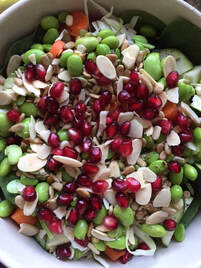
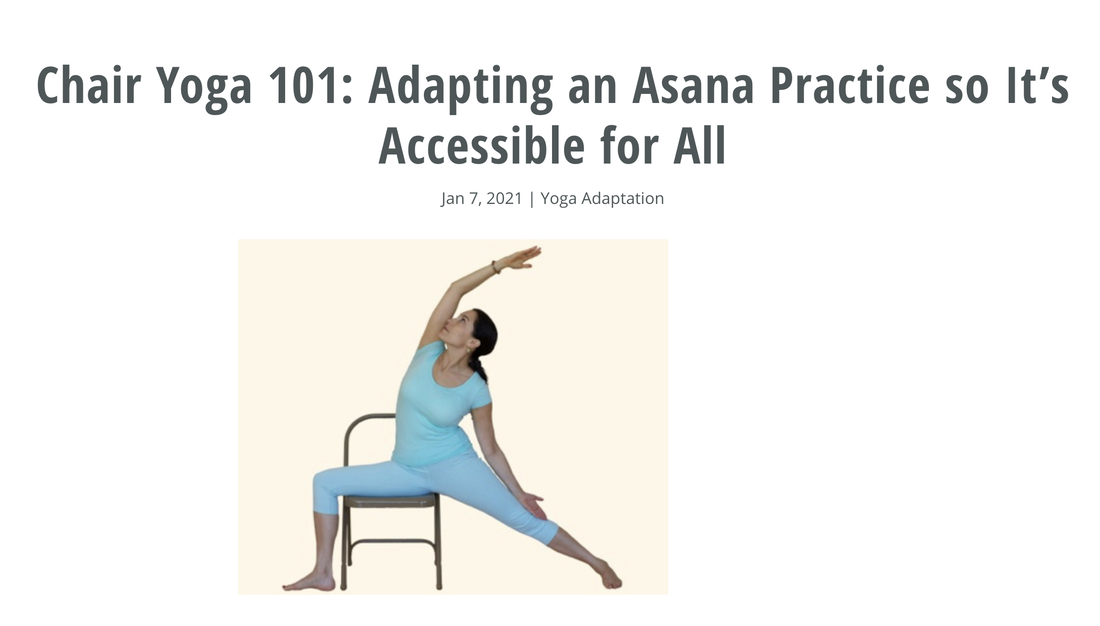

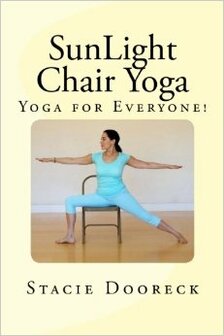
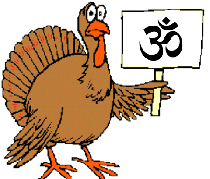
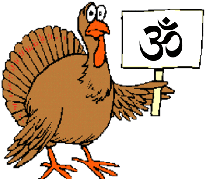
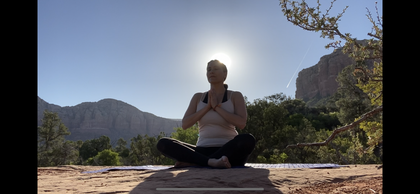
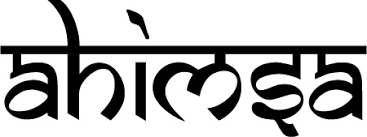
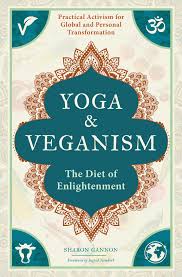
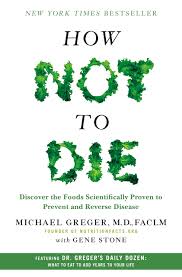
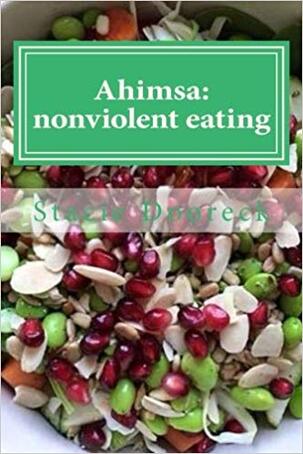
 RSS Feed
RSS Feed
